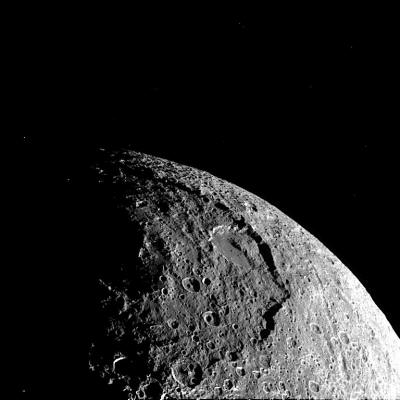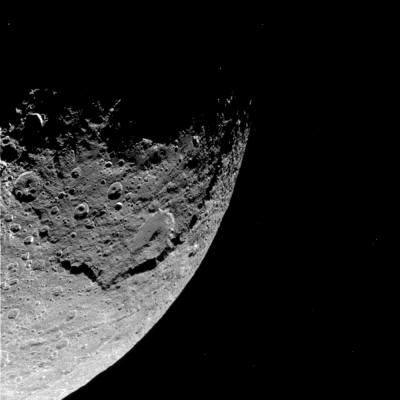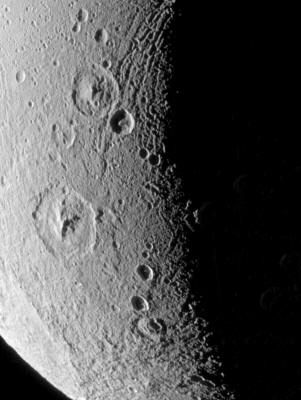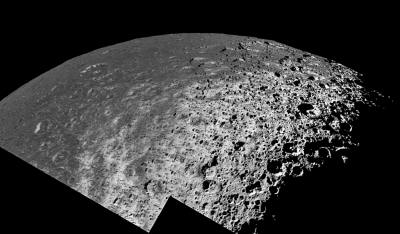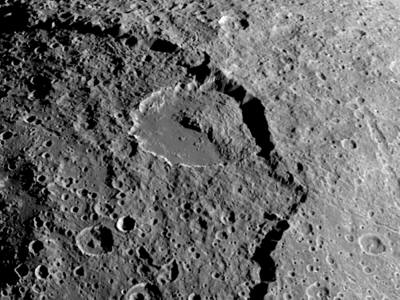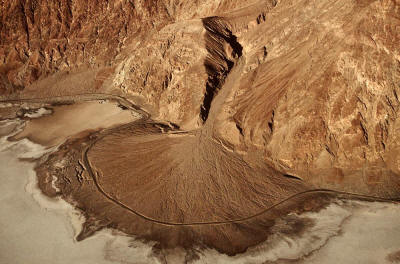|
by Stephen Smith August 13, 2012
from
Thunderbolts Website
A giant crater on Iapetus.
Credit: NASA
Recently, the science journal Nature Geoscience described giant, icy landslides that are supposedly taking place on the Saturnian moon Iapetus.
According to the report, it is frictional heating that overcomes resistance, causing the moon’s crust to give way and move across its surface. By way of background, Iapetus is only 1436 kilometers in diameter, with a surface temperature close to absolute zero.
The Voyager II mission originally photographed it as the spacecraft passed by on August 22, 1971.
Although it is a small moon, Iapetus has several extremely large craters (above image), one of which exhibits a distinct bulge in the center, with another crater at the top.
Iapetus resembles its sister moon, Dione (below-left image) in many ways, such as bright cliffs and abundant shallow craters (below-right image) with central peaks and no blast debris.
The below image of a landslide within a 600 kilometer crater reveals a smaller crater, half buried by the landslide, that is itself 120 kilometers wide.
The larger crater wall, presumably out of which the landslide fell, has been estimated at 15 kilometers in height.
NASA describes this as being a strictly geologic feature.
Since the small crater is buried by debris left by the landslide, it stands to reason it is older than the slide. One problem with estimating the ages of these formations is that they all appear to be fresh, with little or no distortion to the crater rims, despite the conventional explanation that they were caused by the impact of other high velocity bodies.
Another anomalous feature within the debris field is that it doesn’t look like it fell from the cliff face; it looks like it was moved from below the lower right of the smaller crater up against the cliff that it shares with the large crater. It was stopped by the cliff, rather than being its source.
It appears that a giant bulldozer pushed the rubble up against the crater wall.
Given that Iapetus has a surface gravity of only .225 meters per second squared (compared to 9 meters per second squared on Earth), what mechanical force is powerful enough to scoop up many cubic kilometers of material and move it laterally up against a cliff face as if it were a giant wave breaking on the rocks?
In instances of such features on other planetary bodies, like Mars, it is possible that electric arcs cut the crater walls and transported large volumes of material through electrodynamic forces.
Large electric charges flowing through the rock strata cause it to break loose and pulverize, moving along the surface in a process called, “fluidization.” Once the current stops, the material consolidates into a glassified mound, similar to an alluvial fan (below image) on Earth, except with a high, steep face.
If the smaller crater was formed by impact there should be no landslide material, it should have been blasted away by an explosion above the surface, as the standard explanation for crater formation seems to demand.
Neither would the rim of the crater form a truncated circle.
An electric arc causes a subsurface blast, and in the case of the Iapetus crater, the arc tried to cut into the tall preexisting wall and undercut the cliff, causing it to collapse into the newly formed caldera.
The smaller crater is misshapen because there was more material to cut into at the cliff face.
It seems evident that NASA will continue to ignore electricity as an active agent in the outer solar system. Although magnetospheres and ionized plasmas are acknowledged to exist and to even cause certain interactions, no astrophysicist will suggest that plasma could be responsible for the craters, rilles and steep escarpments.
Such attributes are found wherever probes are sent. In places of hard vacuum, exceptional cold or extreme heat, the same process seems to have been at work.
What else besides electricity can produce all the same phenomena in so many different environments?
|

